Kale can be high-yielding and is generally sown in May/June and grazed from October until March. The yield varies depending on growing site and weather, but generally ranges from 8t to 10t DM/ha. Sowing Redstart in August will see yields in the region of 3t to 5t DM/ha. Kale and/or Redstart have the ability to fill a feed deficit if required.
Labour associated with it can be reduced by setting up the grazing system so that the fence only needs to be moved once daily. There are a number of benefits to animals grazing kale.
As the animals are outside, they are accustomed to the weather conditions and can adapt quickly to grass in spring. Animals also tend to put on frame rather than condition and this means that animals will thrive very quickly when put to grass in spring.
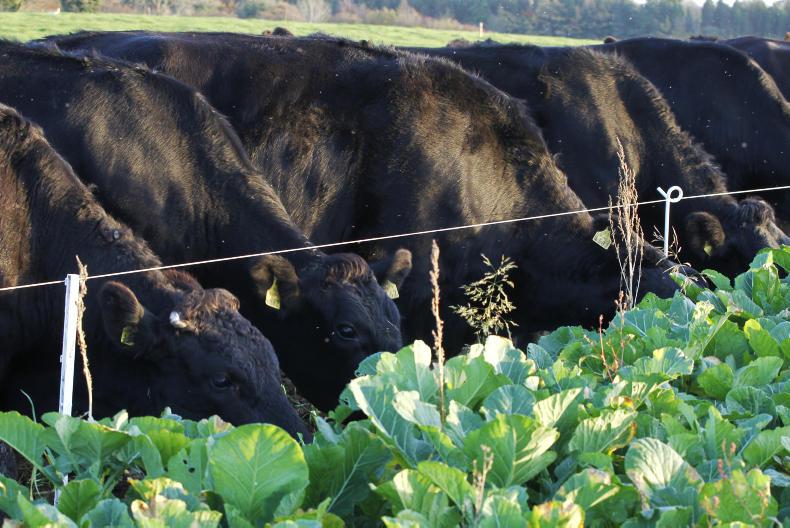
Tullamore Farm suckler cows started grazing Kale on Friday 3 November 2017.
In-calf suckler cows are also much fitter, as they are constantly on the move and calve easier as a result. Animal performance from beef bulls in Grange and dairy heifers in Moorepark have seen weight gains of 0.7kg/day on kale.
Kale requires extra labour during the winter – moving fences and checking stock daily. You also need good fences and a strong electric fence to make sure it is grazed properly.
It’s a good idea to place a line of bales of silage in the field at sowing time and then feeders can be moved with a fence at feeding time in winter. Animals also need access to 1ha/LU of a lie-back area in order to meet cross-compliance requirements.
The variety chosen on Tullamore Farm was Maris Kestrel. This variety was chosen because it has been proven to perform well under Irish conditions. It has a high dry matter yield and also has a high leaf-to-stem ratio.
The sowing rate depends on the sowing method – if sowing via the broadcast method, sow 2kg/ac to 3kg/ac and if direct-drilling sow at 1.5kg/ac to 2kg/ac. Kale requires high fertility levels and optimum pH is 6 to 6.7. You will need to spread four bags/acre of 10:10:20 at sowing time and top-dress with two bags of CAN/acre later. Redstart has similar seeding rates and fertiliser requirements.
Tullamore sowing rate: paddock was sprayed with glyphosate pre-ploughing, ploughed and direct drilled at 2.2kg/acre.Tullamore fertiliser: four bags/acre 10:10:20 on 10 June at sowing time. Two bags/acre 27.5 CAN on 5 July. pH of kale field was 6.9, hence no lime required.Grazing plan: Kale can be grazed from October until early March. Silage bales were placed in the kale field in June at sowing time and extra silage bales have also been fed during the kale-grazing period. The fence is being moved 1m on a daily basis, allocating 9kg DM of kale to cows and 4kg DM to weanlings. Silage was allocated at the rate of 2kg/DM/cow or weanling each day.
How did it go?
Grazing conditions were good, with ground conditions holding well. During periods of frost and snow, the strip wire wasn’t moved until kale had thawed, generally around midday or later. Snow and frost can lead to a yellowing and discolouration of the crop and this can sometimes wither away and die after frost and snow has thawed.
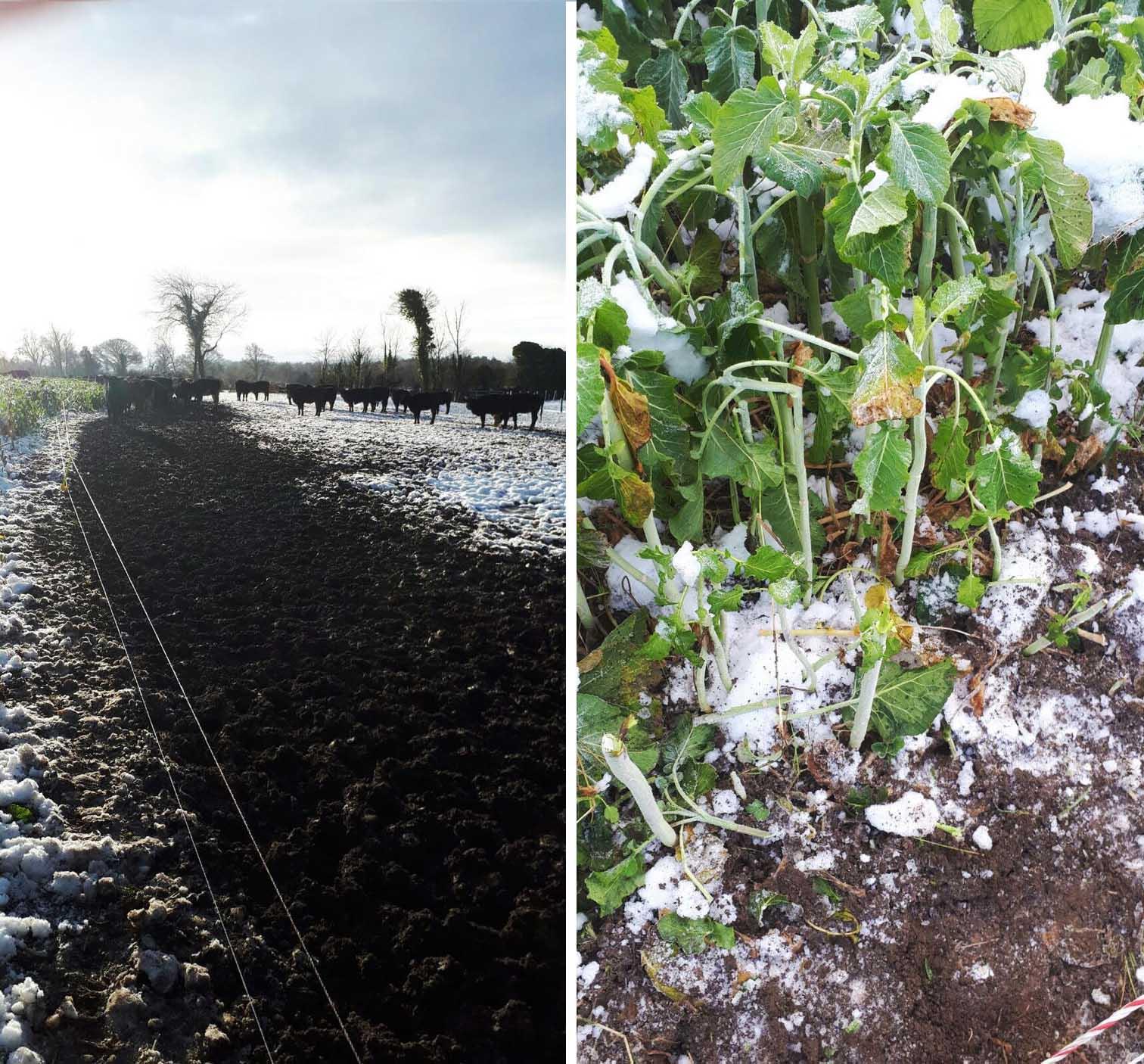
Snow and frost disrupted grazing in Feb/March 2018. The snow/frost resulted in some of the kale being lost.
All stock have access to a lie-back area, but generally lie along the fence line where kale is being grazed. Cows tend to do more damage than weanlings, as they are a lot heavier.
On Tullamore Farm, weanlings did minimal damage to the ground and poaching was kept to a minimum. The last week of February and first week of March were problematic with a heavy snowfall, so silage and meal feeding had to be increased during this time and animals were moved to more sheltered paddocks.
Boluses
Kale is deficient in trace elements and needs to be supplemented with minerals when it’s being grazed by livestock. Cows on Tullamore Farm were bolused with two boluses containing iodine, copper, cobalt and trace elements. Tails were clipped before they started grazing. These cows grazed the kale crop until mid-January and then came indoors in advance of calving.
Weanlings also received boluses before starting to graze kale. These weanlings grazed the kale until early March and were then supplemented with silage and meal at grass until grass growth met demand in late March, when they went straight to grass without having been housed at all during the winter months.
One of the positives is that these weanlings are fully acclimatised to outdoor conditions and should perform well on early grass.
Kale cost per kg/DM: €0.07.Allocation per cow per day: 9kg.Kale cost per day: €0.63.Silage cost: €0.60/day.Total wintering costs: €1.23/day.120 days on kale: €147.120 days on 5t crop of Redstart: €228.Indoor cost (silage: €30/bale): €2.00/day.120 days indoors: €240.This article is part of a 32-page fodder magazine that will be included in next week's Irish Farmers Journal.
Read more
€2.75m scheme for tillage farmers to grow fodder
Fodder incentive scheme: what you need to know
Kale can be high-yielding and is generally sown in May/June and grazed from October until March. The yield varies depending on growing site and weather, but generally ranges from 8t to 10t DM/ha. Sowing Redstart in August will see yields in the region of 3t to 5t DM/ha. Kale and/or Redstart have the ability to fill a feed deficit if required.
Labour associated with it can be reduced by setting up the grazing system so that the fence only needs to be moved once daily. There are a number of benefits to animals grazing kale.
As the animals are outside, they are accustomed to the weather conditions and can adapt quickly to grass in spring. Animals also tend to put on frame rather than condition and this means that animals will thrive very quickly when put to grass in spring.

Tullamore Farm suckler cows started grazing Kale on Friday 3 November 2017.
In-calf suckler cows are also much fitter, as they are constantly on the move and calve easier as a result. Animal performance from beef bulls in Grange and dairy heifers in Moorepark have seen weight gains of 0.7kg/day on kale.
Kale requires extra labour during the winter – moving fences and checking stock daily. You also need good fences and a strong electric fence to make sure it is grazed properly.
It’s a good idea to place a line of bales of silage in the field at sowing time and then feeders can be moved with a fence at feeding time in winter. Animals also need access to 1ha/LU of a lie-back area in order to meet cross-compliance requirements.
The variety chosen on Tullamore Farm was Maris Kestrel. This variety was chosen because it has been proven to perform well under Irish conditions. It has a high dry matter yield and also has a high leaf-to-stem ratio.
The sowing rate depends on the sowing method – if sowing via the broadcast method, sow 2kg/ac to 3kg/ac and if direct-drilling sow at 1.5kg/ac to 2kg/ac. Kale requires high fertility levels and optimum pH is 6 to 6.7. You will need to spread four bags/acre of 10:10:20 at sowing time and top-dress with two bags of CAN/acre later. Redstart has similar seeding rates and fertiliser requirements.
Tullamore sowing rate: paddock was sprayed with glyphosate pre-ploughing, ploughed and direct drilled at 2.2kg/acre.Tullamore fertiliser: four bags/acre 10:10:20 on 10 June at sowing time. Two bags/acre 27.5 CAN on 5 July. pH of kale field was 6.9, hence no lime required.Grazing plan: Kale can be grazed from October until early March. Silage bales were placed in the kale field in June at sowing time and extra silage bales have also been fed during the kale-grazing period. The fence is being moved 1m on a daily basis, allocating 9kg DM of kale to cows and 4kg DM to weanlings. Silage was allocated at the rate of 2kg/DM/cow or weanling each day.
How did it go?
Grazing conditions were good, with ground conditions holding well. During periods of frost and snow, the strip wire wasn’t moved until kale had thawed, generally around midday or later. Snow and frost can lead to a yellowing and discolouration of the crop and this can sometimes wither away and die after frost and snow has thawed.

Snow and frost disrupted grazing in Feb/March 2018. The snow/frost resulted in some of the kale being lost.
All stock have access to a lie-back area, but generally lie along the fence line where kale is being grazed. Cows tend to do more damage than weanlings, as they are a lot heavier.
On Tullamore Farm, weanlings did minimal damage to the ground and poaching was kept to a minimum. The last week of February and first week of March were problematic with a heavy snowfall, so silage and meal feeding had to be increased during this time and animals were moved to more sheltered paddocks.
Boluses
Kale is deficient in trace elements and needs to be supplemented with minerals when it’s being grazed by livestock. Cows on Tullamore Farm were bolused with two boluses containing iodine, copper, cobalt and trace elements. Tails were clipped before they started grazing. These cows grazed the kale crop until mid-January and then came indoors in advance of calving.
Weanlings also received boluses before starting to graze kale. These weanlings grazed the kale until early March and were then supplemented with silage and meal at grass until grass growth met demand in late March, when they went straight to grass without having been housed at all during the winter months.
One of the positives is that these weanlings are fully acclimatised to outdoor conditions and should perform well on early grass.
Kale cost per kg/DM: €0.07.Allocation per cow per day: 9kg.Kale cost per day: €0.63.Silage cost: €0.60/day.Total wintering costs: €1.23/day.120 days on kale: €147.120 days on 5t crop of Redstart: €228.Indoor cost (silage: €30/bale): €2.00/day.120 days indoors: €240.This article is part of a 32-page fodder magazine that will be included in next week's Irish Farmers Journal.
Read more
€2.75m scheme for tillage farmers to grow fodder
Fodder incentive scheme: what you need to know






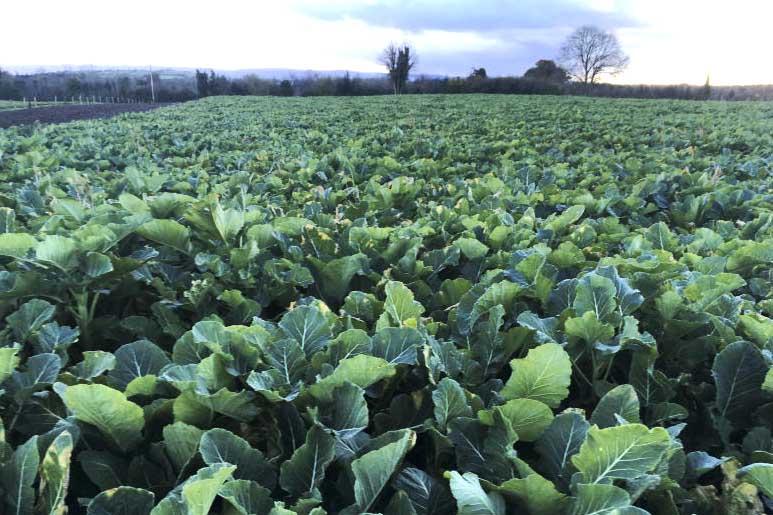
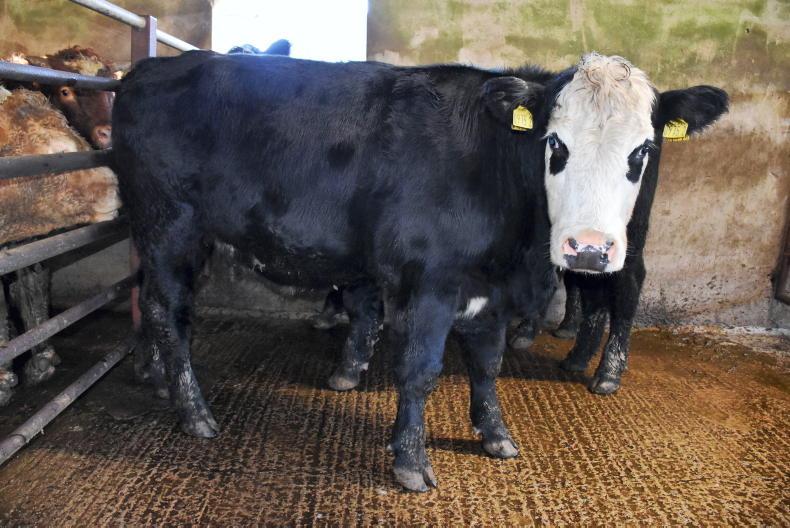

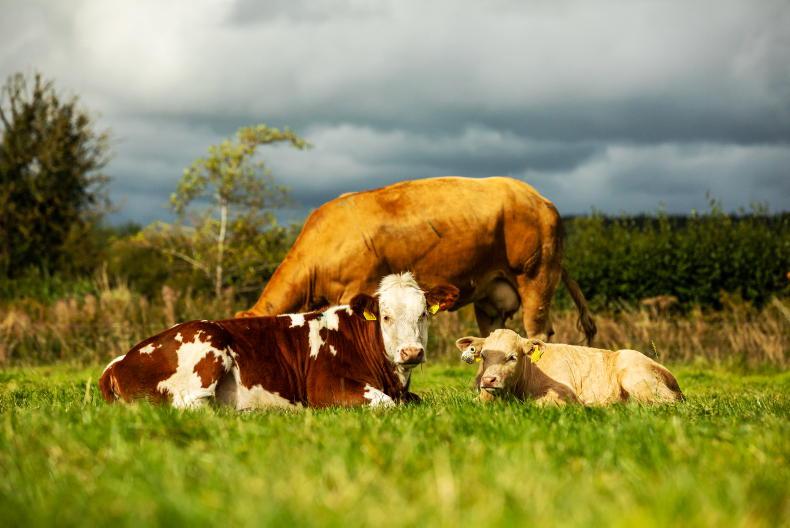

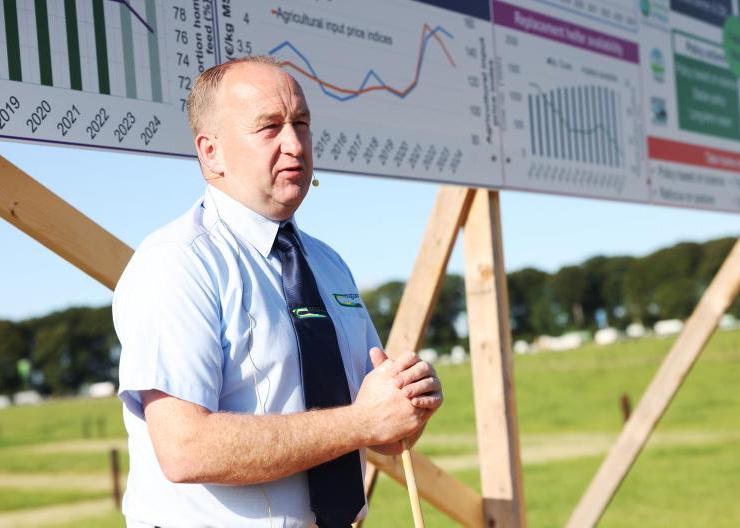
SHARING OPTIONS